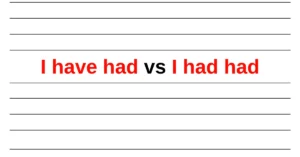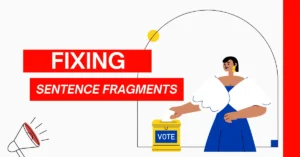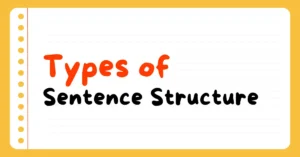Have you ever struggled with understanding how to use “for…to” correctly in English? You’re not alone! This structure is commonly used in both spoken and written English, but many learners find it tricky.
In today’s lesson, we’ll break it down step by step, making it easy to understand and use confidently. By the end of this lesson, you’ll be forming sentences like a pro!

What is the “For…To” Structure?
The “for…to” structure is used to connect a subject with an action. It is typically followed by an infinitive verb (the base form of a verb with “to”).
💡 Basic formula:
👉 for + person/thing + to + verb
📌 Example:
✅ It’s important for the team to arrive on time.
Here, “the team” is the subject, and “to arrive” is the action they need to do. Easy, right? Let’s explore how we use this structure in different situations!

How to Use “For and To” in Different Contexts
A) Expressing Wishes, Suggestions, or Future Plans
When talking about what should happen in the future, we use “for…to” to express our wishes, suggestions, or plans.
📌 Examples:
✅ It’s essential for the school to be well-heated in winter.
✅ It’s important for the meeting to start on time.
These sentences highlight necessity and importance. You can also use “for…to” to suggest good ideas:
✅ It’s a good idea for us to travel in separate cars.
B) After Adjectives to Show Feelings or Opinions
We often use adjectives before “for…to” to describe how we feel or to give opinions about a situation.
📌 Examples:
✅ She’s anxious for us to see her new painting.
✅ I’m eager for the party to be a success.
✅ Robert says he’d be delighted for Emily to come and stay.
💡 Common adjectives used in this way:
✔️ Anxious
✔️ Eager
✔️ Delighted
✔️ Excited
C) Talking About Possibility, Necessity & Value Judgements
The structure “It’s … for … to …” helps us express how possible, necessary, urgent, or important something is.
📌 Examples:
✅ It’s impossible for the job to be finished in time.
✅ Would it be easy for you to call me tomorrow?
✅ It’s important for there to be a fire escape at the back of the building.
D) After Nouns to Give More Information
We use “for…to” after certain nouns to give extra details or explain an action.
📌 Examples:
✅ It’s time for everybody to go to bed.
✅ Our aim is for students to learn as quickly as possible.
💡 Other nouns commonly used in this way:
✔️ Idea
✔️ Plan
✔️ Shame
✔️ Goal
Example: It was a real shame for them not to win after all their hard work.
E) Using “For…To” with Words Like “Something” & “Nothing”
We often see “for…to” after words like something, anything, nothing, or somewhere when we want to describe an action related to them.
📌 Examples:
✅ Have you got something for me to do?
✅ There’s nothing for the cats to eat.
✅ I must find somewhere for him to practice the piano.
F) After Certain Verbs Like “Ask For” & “Arrange For”
Some verbs that are normally followed by “for” can also be used with “for…to” to show an action that needs to happen.
📌 Examples:
✅ Anna asked for the designs to be ready by Friday.
✅ Can you arrange for the gold to be delivered on Monday?
G) After “Too” and “Enough” to Show Limits
We use “for…to” with too (when something is excessive) and enough (when something is sufficient).
📌 Examples:
✅ This box is much too heavy for you to lift.
✅ Do you think it’s warm enough for the snow to melt?
H) “For…To” as the Subject of a Sentence
Sometimes, we use “for…to” as the subject of a sentence to emphasize an action or possibility.
📌 Examples:
✅ For us to fail now would be a disaster.
✅ For her to lose the election would make me very happy.
However, it’s more common to use the preparatory “it”:
✅ It would make me very happy for her to lose the election.
Key Uses of “For…To”
✔️ Expressing wishes & suggestions (It’s important for the meeting to start on time.)
✔️ After adjectives (She’s anxious for us to see her work.)
✔️ Showing necessity & importance (It’s essential for the school to be well-heated.)
✔️ After nouns (It’s a good idea for us to travel separately.)
✔️ With words like “something” & “nothing” (Is there anything for me to do?)
✔️ After certain verbs (She arranged for the guests to be seated.)
✔️ With “too” & “enough” (The bag is too heavy for me to carry.)
✔️ As a subject (For us to succeed, we need teamwork.)
Explore More:
- Well vs. Good: What’s the Difference and When to Use Each
 What is the difference between good and well. These two words might seem similar, but they’re used in …
What is the difference between good and well. These two words might seem similar, but they’re used in … - Have You vs. Did You: What’s the Real Difference?
 Imagine you’re meeting a friend in the evening, and you want to ask if they …
Imagine you’re meeting a friend in the evening, and you want to ask if they … - Difference Between I have had and I had had
 Have you ever found yourself tangled in the web of “I have had” and “I …
Have you ever found yourself tangled in the web of “I have had” and “I … - Understanding and Fixing Sentence Fragments
 In this lesson, you will be learning about sentence fragments. Ever written something that looks like …
In this lesson, you will be learning about sentence fragments. Ever written something that looks like … - Types of Sentence Structure: Simple, Fragmented, or Run-On
 In this English Grammar lesson, you’ll be learning about sentence structure, specifically focusing on simple sentences, fragments, and run-on …
In this English Grammar lesson, you’ll be learning about sentence structure, specifically focusing on simple sentences, fragments, and run-on …




